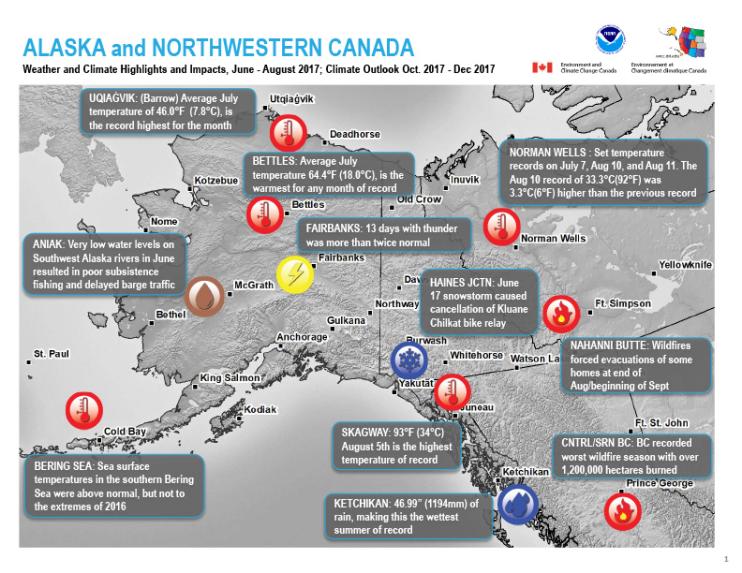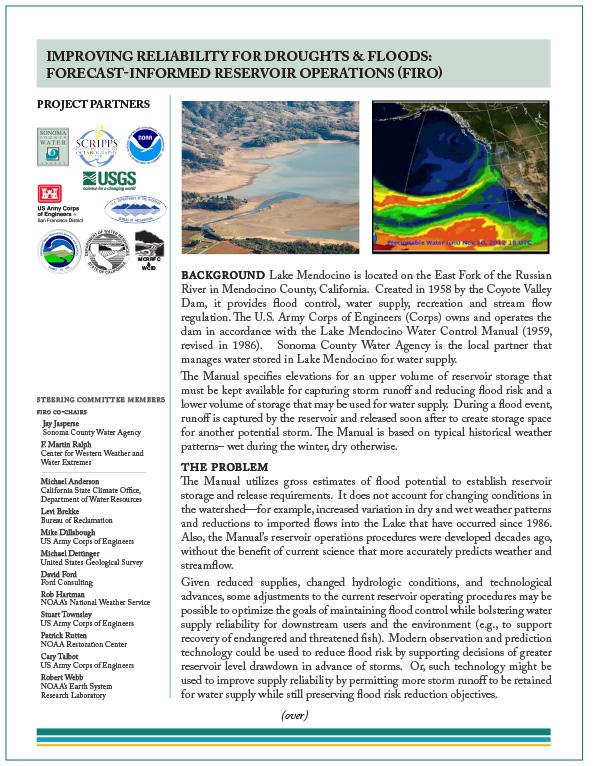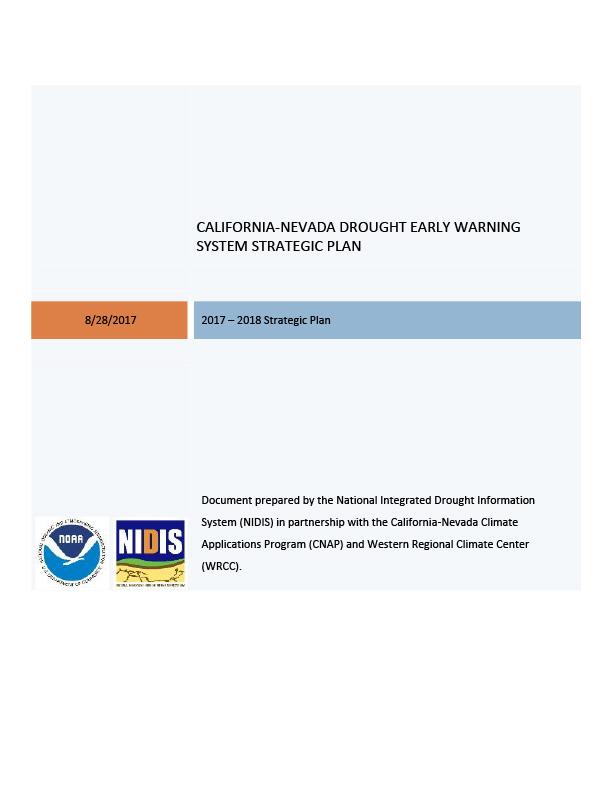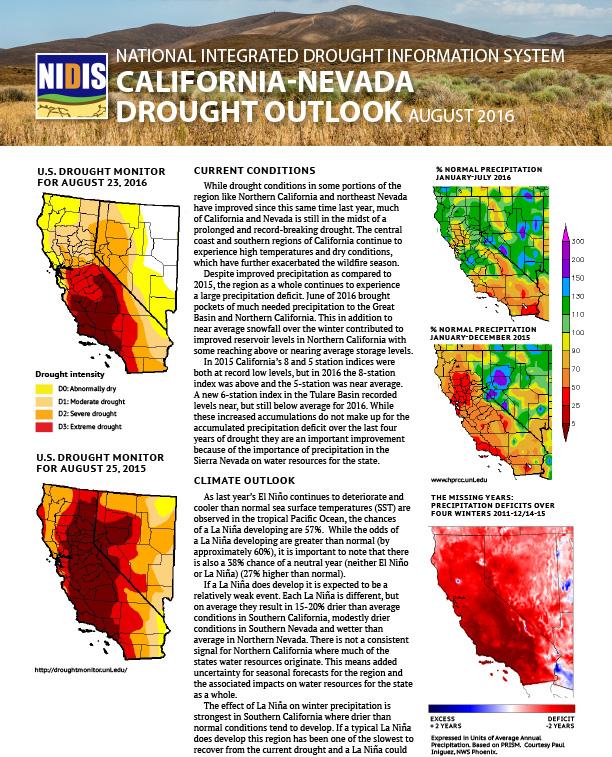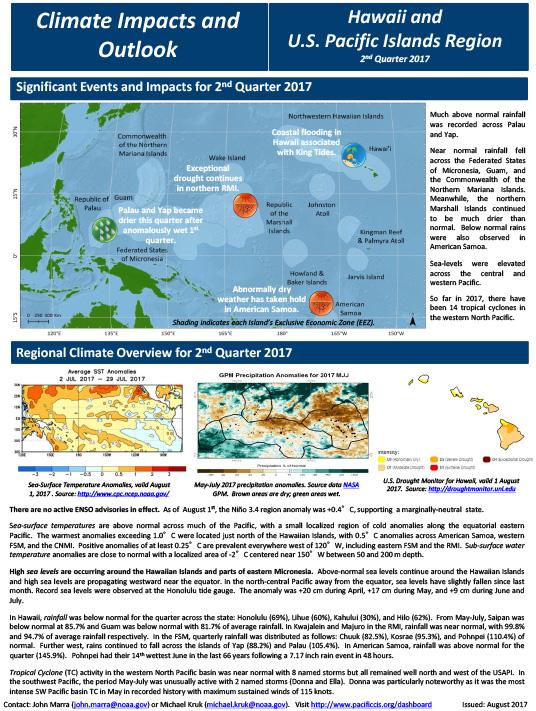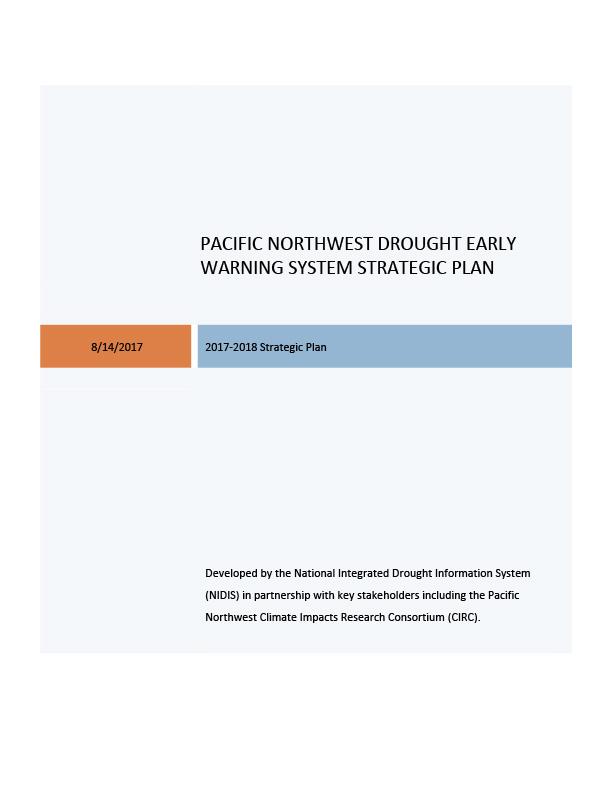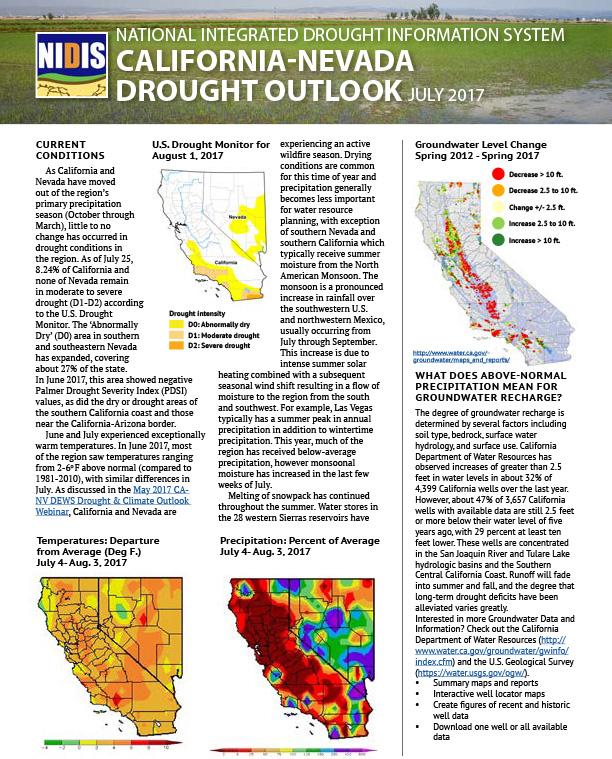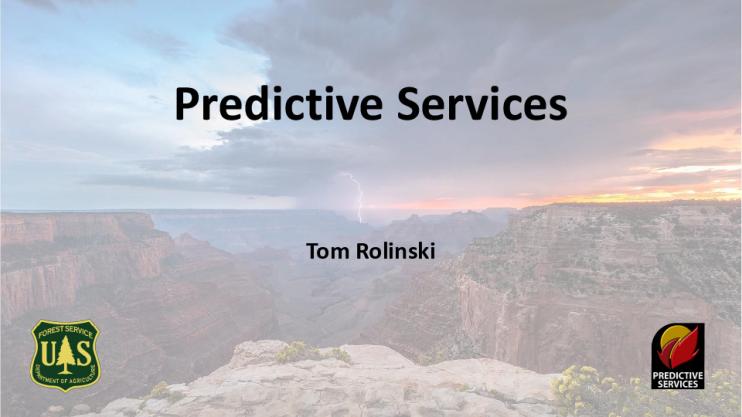Quarterly Climate Impacts and Outlook for Alaska and Northwestern Canada for June – August 2017; outlook for October – December 2017. Dated September 2017.
Summer 2017 was significantly warmer than normal over most of the region, though Southeast Alaska and northern British Columbia were, overall, closer to normal. Precipitation, as is often the case in summer, was quite variable. Southern and northern coastal areas were wetter than average. Most inland areas and western Alaska had near normal rainfall but with small dry pockets.
Quarterly Climate Impacts and Outlook for the Western Region for June – August 2017. Dated September 2017.
Warmest summer on record for California and Nevada; second warmest for Oregon, 3rd warmest for Utah, and 4th for Washington and Arizona. Several locations set record for all-time warmest month in July: Reno, NV, Salt Lake City, UT, and Bakersfield, CA. Much drier than normal conditions across northern tier of West; Montana had 2nd driest summer on record. Moderate to exceptional drought conditions developed across Montana.
A workshop was held in August 2014, at University of California San Diego/Scripps Institution of Oceanography. Thirty-two representatives from multiple agencies met for three days to scope out an appraisal-level FIRO study. A work plan is now being drafted for release in early 2015. The FIRO study is expected to occur over the next five years (depending on funding).
The California-Nevada Drought Early Warning System (DEWS) Strategic Plan outlines priority tasks and activities that build upon existing stakeholder networks to improve drought early warning capacity and long-term resilience in California and Nevada. It includes a list of current partners, outcomes, and key milestones. This Plan is a “living document” to which additional actions and partners may be added as needed.
Document developed from California-Nevada Drought Early Warning System Drought & Climate Outlook Webinar on Aug. 24, 2016. Includes information on current conditions, the climate outlook, impacts, state actions in response to drought. Graphics include U.S. Drought Monitor compared year-over-year conditions; percent of normal precipitation Jan.-July 2016 and Jan.-Dec. 2015; precipitation deficits during winters of 2011-2015; more.
Quarterly Climate Impacts and Outlook for the Hawaii and the U.S. Pacific Islands Region for May – July 2017. Dated August 2017.
Includes significant events and impacts for Q2 2017; regional climate overview; sectoral impacts, and regional outlook for August through October 2017.
The PNW DEWS Strategic Plan outlines priority tasks and activities to build drought early warning capacity and resilience. Partners across the region assisted NIDIS, the Pacific Northwest Climate Impacts Research Consortium(link is external) (CIRC, a NOAA RISA team), and the National Drought Mitigation Center (link is external)(NDMC) with the development of this Plan. The Plan includes a list of current partners, outcomes, and key milestones.
Current conditions as of July 2017; climate outlook. Information about CAL-Adapt and how CNAP is providing drought scenarois for it, as well as a short section on “What does above-normal precipitation mean for groundwater recharge?”
Quarterly Climate Impacts and Outlook for Alaska and Northwestern Canada for March – May 2017; outlook for July – September 2017. Dated June 2017.
A description of the predictive services and the fire potential in Southern California.


